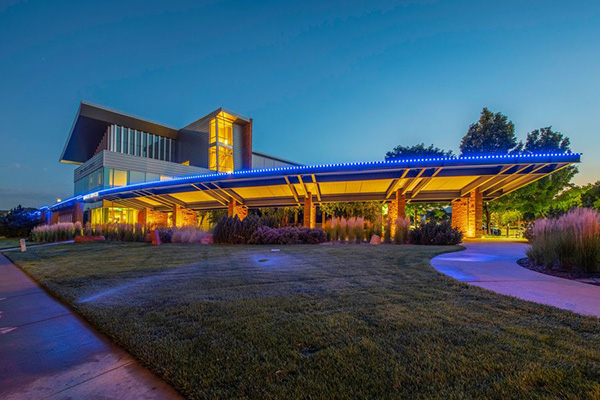
covenants
Permanent Christmas lights HOA forms and templates
LOOKING FOR SAMPLE HOA CONVENANTS? CONSIDER THESE GUIDELINES
If you landed on this page, you’re likely on an HOA committee that is evaluating the use of permanent, multi-seasonal holiday lighting within your community. Oelo Lighting Solutions was one of the first manufacturers to introduce permanent holiday lighting, and after a decade in the business, we recognize residents and communities may be looking for HOA forms and templates to help guide the conversation around permanent holiday lighting.
Like you, Oelo values curb appeal, and we recognize permanent holiday lighting can add to a neighborhood’s ambiance OR detract when low-quality products are overused. We assembled this guide to help your community draft provisions that result in sensible, well-lit homes that will further add to each homeowners’ resale value. Here are sample HOA covenants and restrictions for permanent, multi-seasonal holiday lighting. (Last but not least, if you’re a resident seeking HOA approval and need presentation materials, please email Amy Speer at amys@oelo.com, and she can further assist you.)
That said, without further ado, here are some guidelines for HOA consideration …
ARTICLE [XX]
PERMANENT HOLIDAY LIGHTING INSTALLATIONS
Pre-Installation Requirements
- Approval is required for permanent holiday lighting installations (trim, soffit or under-eave lighting) that is 1) hardwired into the home, 2) spans more than 25 linear feet, 3) and is intended for long-term or permanent use of more than three months. Approval must be submitted in writing 30 days prior to installation.
- Systems must be highly rated for safety and include the following certifications: 1) the UL certified mark, 2) IP68 rating for long-term water immersion protection and 3) UL 94 V-0 fire safety rating that ensures the LED materials are highly resistant to ignition and self-extinguish within 10 seconds.
- To be classified as security lighting to deter and detect criminal activity, the permanent holiday lighting system must have “spotlight” functionality that allows select LEDs to illuminate doorways and walkways at scheduled intervals.
Installation Requirements
- Only permanent holiday lighting products that use [acrylic or metal] channel to conceal light strings is acceptable. The channel must be screwed permanently into the structure for longevity and daytime curb appeal. Peel-and-stick products are not prohibited. [Channel can mounted outward so long as it is mounted in an acrylic channel with lens that conceals the LED puck.]
- The color of the channel must match the housing material that it is installed on to conceal the lighting during the day.
- The system’s control box must be installed 1) under the soffit, 2) on the side, rear or interior of the structure.
- Any wires that cannot be concealed in the channel must be installed in an aesthetically pleasing way using screw-mounted zip ties or other approved means.
- When choosing a product, please take these Dark Sky recommendations into consideration. Choose an installation that: 1) limits uplight allowance, 2) has dimmable controls and 3) displays warmer colors that do not exceed 3000K on the Kelvin scale.
Acceptable Light Operation Usage
- Holiday lighting use is permitted 3 days prior to a recognized local, state or national holiday and must be reverted back to standard security/accent lighting when not used as holiday lighting. Christmas lighting is permitted after Thanksgiving until Jan. 15. [Permanent holiday lighting systems can be used to celebrate local team gamedays; local teams include the following: Insert teams here.]
- Colored and pattern lights, with running, chasing or animated sequences, is allowed during the above permitted times; however, lighting cannot strobe, flash or pulse excessively. [Excessively should be further defined by the HOA.]
- Holiday lighting must be turned off each night by 11 p.m. Only systems with a scheduling feature are allowed.
- The permanent lighting system can be used as security lighting, so long as 1) the color displayed is a warm white that does not exceed 3000K on the Kelvin scale, and 2) is used to illuminate entry points of the exterior or light areas that are being recorded by video security devices to aid in capturing perpetrator footage.


